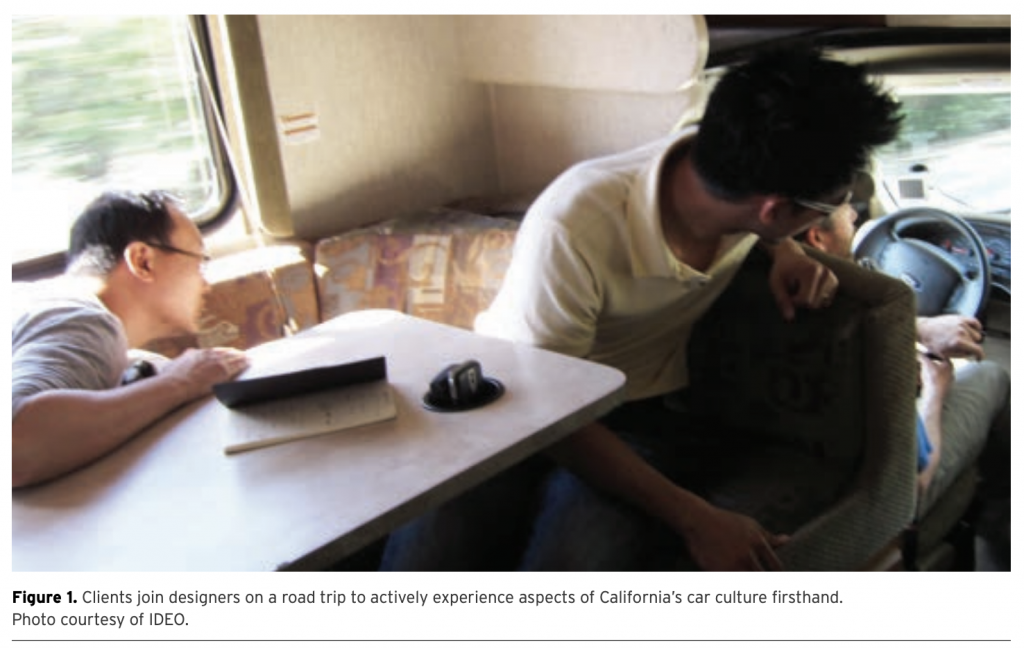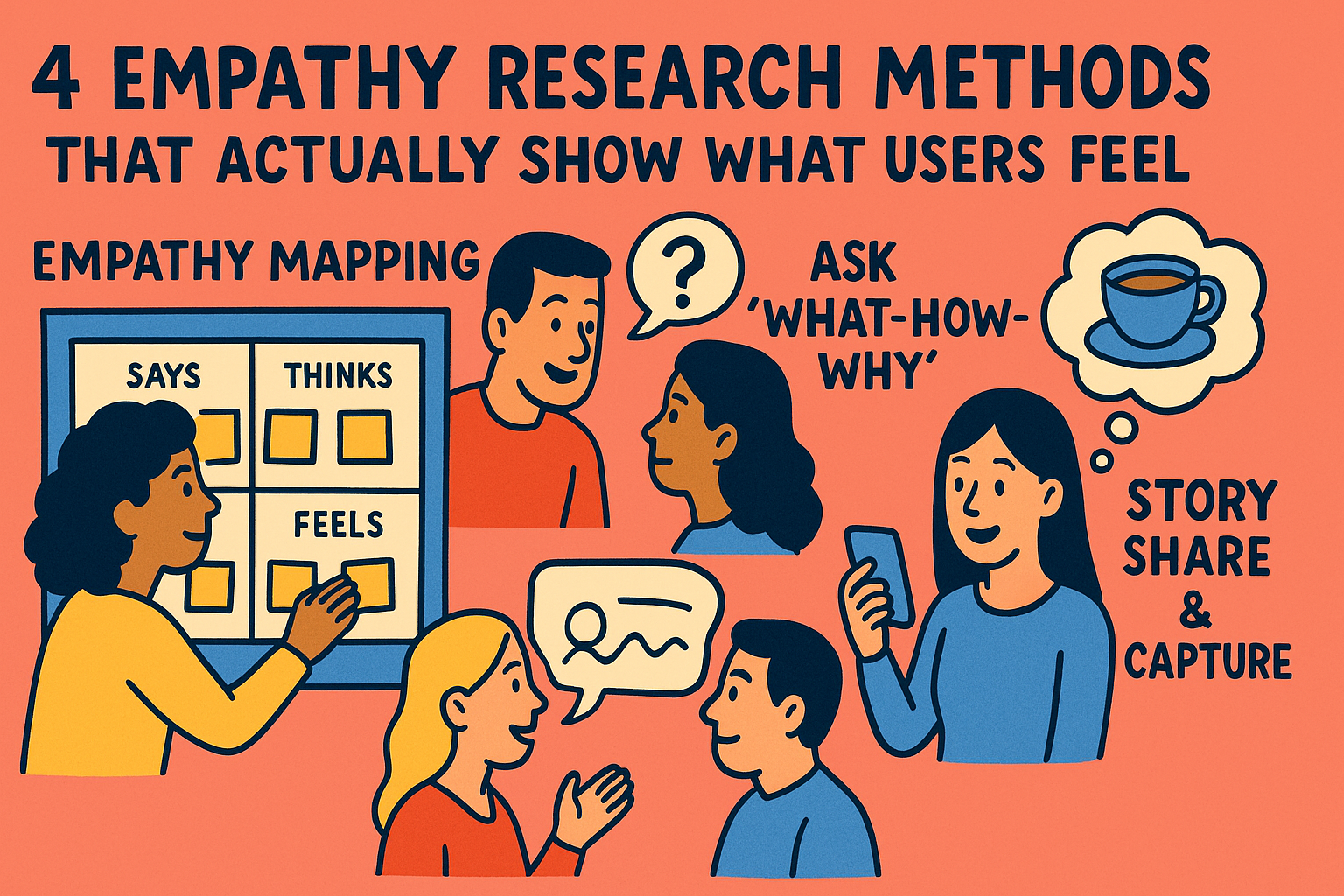One thing I’ve learned in design and media is that empathy isn’t just about being “nice” or “understanding.” It’s about actually putting yourself in someone else’s shoes so you can design things that work for them—not just what you think they need. And honestly, that’s harder than it sounds. That’s why empathy research is such a big deal in design thinking!
There are tons of ways to do it, but here are four methods I think are super practical (and actually kind of fun).
Empathy Mapping
If you’ve ever been in a brainstorming session with a giant board covered in sticky notes, you’ve probably seen an empathy map in action. Basically, it’s a tool where you break down what your user says, thinks, does, and feels.

It’s not just about writing down quotes—it’s about capturing emotions, frustrations, and even contradictions. For example, a user might say they love online shopping, but when you map it out, you notice they feel anxious during checkout. That insight? Pure gold for designers.
One of my favorite methods, the empathy map helps make it easy to jot down all of your thoughts into one place. It helps keep me organized, as well as think ahead of my project!
Asking “What-How-Why”: The Question Ladder
This one is simple but powerful. Mentioned in an article written by Ale Wiecek on the Medium, when you’re interviewing someone, don’t just stop at “What did you do?” Keep digging:
- What happened? (the action)
- How did you do it? (the process)
- Why did you choose that way? (the motivation)
It feels a little like being a detective, but it gets you past surface-level answers. For example, someone might say, “I always use PayPal.” You ask “How?” and “Why?” and suddenly you learn it’s not about convenience—it’s about feeling safer putting money online. That “why” is the real design insight
Photo & Video Journals — Catching Glimpses of Life
This one is another one of my favorites. Instead of asking users to explain everything in an interview, you hand the camera over to them. Ask them to take quick photos or videos of their daily routines that connect to your topic.
It’s amazing how much you can learn just from seeing people in their own space. For example, a commuter might snap a photo of the messy coffee cup balancing act they do every morning on the bus. Suddenly, you’re not just designing for “commuters”—you’re designing for that exact moment of stress and chaos.
It can be quite risky but beautiful to have someone trust you enough to capture their personal lives. Using this method means the topic being covered must be crucial in their lives enough to share everything!
4. Story Share & Capture — Having Real Talks
Humans love telling stories, and sometimes you learn the most when you let people talk about a real experience. Ask them to share a time when something went really well (or really badly) with a product or service.
The best part about story capture is that you get the emotional arc—the highs, lows, frustrations, and even little wins. And when you bring those stories back to your team, they hit harder than stats or charts ever could. It’s like, “Oh wow, this is why we need to fix this.”
Conclusion
Empathy research isn’t just an academic exercise—it’s how you get to the heart of what people actually need. Whether you’re mapping feelings, digging with “Why” questions, asking for photos, or listening to stories, the goal is the same: to design with real people in mind.
An article published by the IDEO Journal states that,
“The impact of design work must have staying power far beyond its final presentation, implementation, and market adoption.”
To me, this means that the impact of your work using design thinking should far exceed putting it into action, but should last and help others for as long as possible.

All in all, once you try one or all of these methods, you’ll start to notice how much richer (and more human) your projects can become.

Leave a Reply